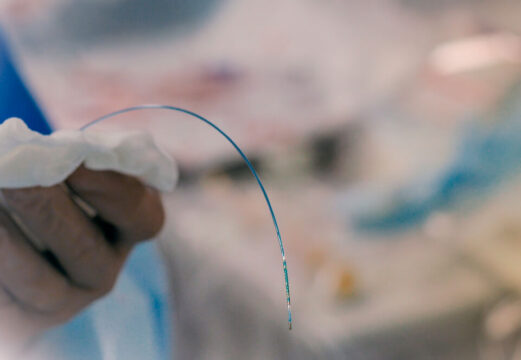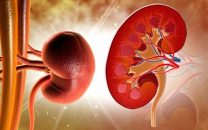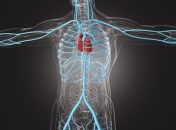With the new devices (drug-eluting balloons [DEB], drug-eluting stents [DES], and atherotomes) percutaneous treatment is becoming the first line of approach for femoropopliteal disease, especially when dealing with not very long total occlusions. Randomized studies and registries on the use of drug-coated balloons (DCB) in femoropopliteal disease are currently available, but their evolution beyond 2…
Intervention in Patients with Takayasu Arteritis: Rescue Therapy or an Alternative Complementary to Immunosuppressive Therapy?
Takayasu arteritis (TAK) is an uncommon granulomatous large-vessel vasculitis that affects the aorta and its primary branches. The most frequently types of observed vascular compromise are obstructive lesions, and aneurysmal vascular lesions or dissections. In 2021, the American College of Rheumatology recommended not to implement percutaneous intervention (PI) with these patients and only use immunosuppressive…
Is There Any Difference in Clinical Outcomes Between Transient and Persistent Acute Kidney Injury in ACS Patients after Invasive Treatment?
Acute kidney injury (AKI) following acute coronary syndrome (ACS) is associated with prolonged hospital stay and worse prognosis at followup. However, serum creatinine level increase can either be transient or permanent. At present, retrospective studies show transient AKI patients present similar survival rate to patients with no AKI. The prognostic implications of transient and persistent…
Pulmonary Artery Denervation: Valid Alternative for Pulmonary Arterial Hypertension Grade 1?
Pulmonary vessels are densely innervated by sympathetic, parasympathetic, and sensitive fibers. According to the World Health Organization (WHO) pulmonary arterial hypertension (PAH) grade 1 consists of obliterating pulmonary vascular remodeling accompanied by a diminished generation of vessel dilators. Its pharmacological treatment has certain limitations and sympathetic pulmonary vascular denervation might be a valid treatment alternative,…
IVUS Use in Peripheral Vascular Disease: Should this Tool Be Used More Frequently in Peripheral Interventions?
Use of intravascular ultrasound (IVUS) has increased rapidly, and several randomized and observational studies have shown improved results in patients who underwent coronary angioplasty using this tool. However, evidence on IVUS on peripheral interventions is more limited. Observational studies have found similar benefits when IVUS was part of the revascularization strategy. In a meta-analysis of…
Safety of Atherectomy in Femoropopliteal Disease
Peripheral artery disease hinders patient quality of life extensively. In advanced stages, such as critical lower limbs ischemia (CLLI), it could yield an increased risk in major cardiovascular events, as well as limb-related events (amputation or repeat revascularization), making treatment with revascularization paramount in these cases. Calcification is a predictor of revascularization failure, which is…
BEST-CLI: Revascularization of Critical Lower Limb Ischemia, a Pragmatic Study
Critical lower limb ischemia (CLLI) is associated with a major deterioration in quality of life and a significant increase in morbidity and mortality. Its estimated annual incidence is 220 to 3500 cases per million people, with an expected prevalence of 11% of patients with peripheral arterial disease. CLLI is the “terminal” stage of peripheral artery…
Drug Coated Balloons in Femoropopliteal Territory: Predictors of Failed Patency
Endovascular treatment in femoropopliteal territory has become the strategy of choice over time, with diverse devices; among others, drug coated balloons (DCB). DBS are meant to provide the antiproliferation effect of drugs while reducing exposure of a specific artery segment to a strange body. Even though the number of studies on DCB effectiveness has been…
Mild or Intermediate Symptomatic Carotid Lesions: What we need to know about plaque
Ischemic stroke is the main reason behind disability in the world, and it is often followed by death. The rupture of carotid atherosclerotic plaque and its embolization are the main cause of this entity. Different randomized studies have shown that carotid endarterectomy is beneficial in symptomatic patients with 70 to 99% carotid obstruction, but we…
EMINENT Trial | Stent Eluvia vs BMS in Femoropopliteal Territory
Endovascular therapy in femoropopliteal territory has become the standard, mainly with self-expanding stents, aimed at preventing early vascular recoil and late constrictive remodeling. Randomized studies have shown that the use of Paclitaxel drug eluting stents (DES) reduces the number of new revascularizations (even though these studies compared mostly against conventional balloons, which is why we…
Results of the COMPARE Study After 2 Years: Low Dose vs. High Dose Paclitaxel-Coated Balloons
The development of new devices and techniques has expanded the range of patients who benefit from endovascular treatment of femoropopliteal lesions. Paclitaxel-eluting devices have improved clinical results and treated-vessel patency at follow-up compared with conventional angioplasty. Currently, devices with different doses of paclitaxel are available in the market. The COMPARE (Compare I Pilot Study for…










